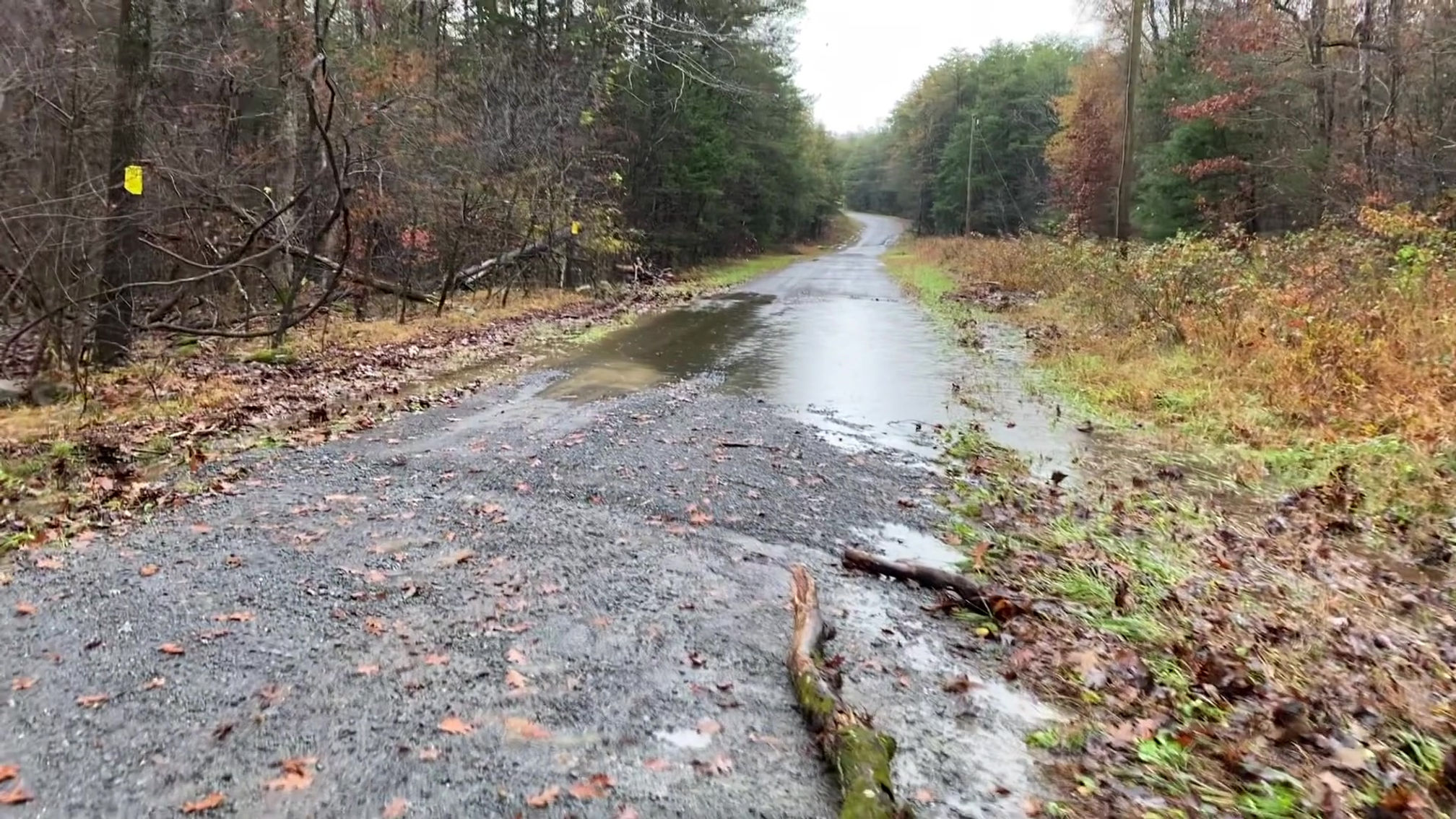Water Ecological Concerns
Industrial-Scale Solar Near Waterways-Wetlands Can Lead To Catastrophic Water - Ecological Disasters
The neighbors exlain since last fall, every time it rains, a little more of their land is being washed away by excess stormwater runoff from Dominion Energy’s Belcher Solar Project.
The week before, the project in Essex County was celebrated by officials. Only a half inch of rain caused this environmental disaster, feeding into the Rappahannock River and Chesapeake Bay watershed, in Virginia.

By: Mark Holmberg
Posted Feb 08, 2018
ESSEX COUNTY, Va. -- Gary McCauley of Essex County knows construction and he knows the Muddy Gut Creek watershed where he’s spent most of his 63 years.
Never for a minute did he believe anyone, or any company would be allowed to build in such a way that an untold number of tons of muddy sediment would blast through the ditches, the sleepy creek and into the Rappahannock River, all part of the Chesapeake Bay watershed.
“Mud coming in from the solar farm, all the way up the road, down in Muddy Gut Creek, which feeds right into the river,” he said as he looked at the mud-clogged ditches by the creek. Read full article.
Uncontrolled storm water runoff and erosion are well-documented byproducts of industrial-scale solar construction. This massive increase in watershed sedimentation impacts all downstream rivers and waterways. Water contamination doesn’t stop with the end of construction. Removal of all trees and deep-rooted plants, along with inadequate stormwater controls lead to runoff, erosion and water contamination issues. These power plants should not be sited on agricultural land, near wetlands and waterways and away from residents whose groundwater and environment could be damaged.
Our advice to fellow citizens if an industrial-scale solar plant application is being proposed in an inappropriate and disastrous area?
1. Share materials and raise awareness, with your community, planning commission and board of supervisors.
2. Start to document heavy rainfall (collecting and submitting photos-videos) to your local county.
3. Engage with your local environmental organizations-groups, to submit opposing letters (view examples here).
4. Gather land owners-farmers-organizations to speak about the water issues and why the land isn't right for industrial-scale solar on agricultural-rural-forestry land.
5. View the 3 important points at the bottom of this page to cover off in your community planning meetings.
Guidance and Site Plans “Isn’t Enough” When The Rain Falls And Soil Is Exposed. If Solar Poses Water Concerns, Then It Should Be Rejected.
Culpeper Faces Disastrous Water Run-Off Consequences that Lead Into The Rapidan River - Chesapeake Bay Watershed, Which Have Not Been Addressed
Uncontrolled runoff of water and topsoil is a well-documented byproduct of large-scale solar project site development. The sites targeted by solar developers include wetlands, streams and tributaries that feed into the Rapidan River and ultimately to the Chesapeake Bay.

This is a photo of the Radian River in Culpeper, which frequently floods as seen here in 2019.
“It’s like any other large-scale development. When you remove the forest cover and plants, it exposes the soil” and runoff results during rainstorms.
“Smaller communities don’t have the professional staff to manage large-scale projects,” and they are caught off guard, Ricci said.
Read Full Article





Rainfall in Culpeper between Nov 11-12, 2020 leads to more flooding in areas proposed for industrial-scale solar, raising further environmental - ecological concerns.

Solar projects should not be placed near wetlands, rivers, streams, tributaries to avoid immediate damage to water quality, and possible contamination-ecological disasters.
Piedmont Environmental Council Urges Culpeper to Reject Industrial Scale Solar, As Culpeper's Land Is Not Suitable

Culpeper: Piedmont Environmental Council urges the county to reject industrial solar plans
3 key Points to Take Into Account When Reviewing Water control Plans for Solar Proposals:
1. Is there an adequate stormwater and erosion plan?
Your community and planning or zoning board need to press the energy companies to ensure NO water will leave the property? How?
2. Why do the biggest energy companies have track records of violations?
Why did NextEra (one of the biggest energy companies in the USA) pay $37M in penalties since 2000? Because, it's not their community and NextEra's annual revenue in 2019 was $19.204B. Can your county afford a ecological-water contamination disaster?
3. Does your county have qualified staff to monitor and enforce conditions of an approved site plan?
It is the residents who will suffer the negative consequences.





